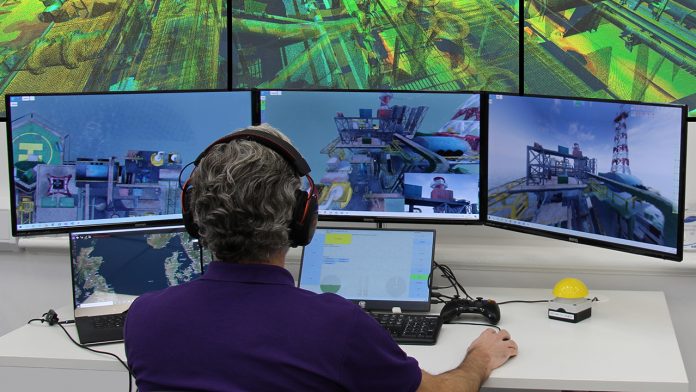A consortium, led by specialist drone solution developer, sees.ai, has been awarded a shared of £30m to develop and test a remotely operated drone system for industrial and urban environments
The futuristic drone system will enable remote inspection and monitoring of urban sites in the public domain e.g., road and rail and telecoms infrastructure, industrial sites (construction, nuclear and oil and gas), and enable live emergency services support.
The system, which uses similar technology to autonomous cars, enables autonomous drones to be flown under tight human supervision by pilots based in a central control room hundreds of miles away.
Pilots can precisely execute complex missions remotely – even reactive missions (designed on-the-fly) and close-quarter missions encountering GPS-denial, magnetic interference and degradation and loss of communication.
The consortium consists of 16 entities, including Skanska Costain STRABAG working in partnership with HS2.
‘A game-changer for project teams’
Nathan Marsh, Costain’s chief digital officer, said:” Digital innovation across the industry is of crucial importance in moving into a smarter, faster, greener and more efficient way of delivering infrastructure projects.
“Deploying drones from comfort of their homes will be a game-changer for project teams by speeding up the process and keeping teams safe and socially distanced throughout the Covid-19 pandemic.”
The funding comes from the Future Flight Challenge, Phase 2 competition, part of the Industrial Strategy Challenge Fund, delivered by UK Research and Innovation.
Technical contributors to the consortium include: NATS, Vodafone, BAE Systems, The Met Office, Flock Cover, UAM Consult Ltd and University of Bristol Smart Internet Lab.
The project involves the drone system being put through a series of tests, increasing in complexity and challenge.
During the test, the system will be operated by leading drone service provider, Terra Drone.
‘Scratching the surface of their potential’
Harrison O’Hara, innovation manager at Skanska Costain STRABAG JV, commented: “It’s exciting to be part of this trial to safely fly drones beyond visual line of sight in industrial environments.
“Although drones are by no means a new concept they are still far from business as usual and we are only just scratching the surface of their potential, especially when it comes to operating in challenging locations such as the underground tunnels we are building for HS2.
“We are always looking at new ways to improve safety, work more efficiently and deliver a world-leading project such as HS2.
“It’s great to be working with a pioneering company such as sees.ai to support our existing capabilities.”
John McKenna, CEO of sees.ai, added: “Unlocking the safe and remote operation of drones in urban and industrial locations will deliver huge benefits to society across public health & safety, efficiency, and environmental impact.
“We are enormously proud to be leading this consortium and to be working with such incredible partners to develop this advanced Beyond Visual Line of Sight (BVLOS) aviation system.”

















